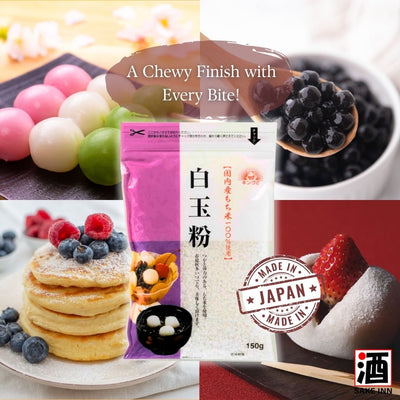Sake Guide: Basics
New to sake? Learn and understand a little more about sake through our sake guide as we try to walk you through the basics of sake as simple as possible. You don't have to be a sommelier to enjoy sake!
What is Sake

Sake is an increasingly popular and recognizable drink around the world. It is an alcoholic drink made from fermenting rice under optimal conditions. The alcohol content for sake can be anywhere from about 15% to 20%.
Do note that what we know as sake is also known as nihonshu (日本酒) or seishu (清酒) in Japan and on your sake bottles. So do look out for "日本酒" or "清酒" next time you are dining out in Japan and not just "酒" as it can refer to any alcoholic drink.
Ingredients
Sake is mainly made up of rice, water, rice koji, and yeast. Each playing a part in the quality of the sake produced.
Rice
Rice used in sake brewing is different from our everyday cooking rice. Sake rice (sakamai) is bigger and has more starch, protein and fat content in it. While the type of rice used in the brewing process is important, the way they are planted also affects the quality of the resulting sake.
There are at least 80 types of sake rice in Japan The more popular ones used in sake making includes Yamadanishiki, Gohyakumangoku and Omachi rice.
Water
The quality of the sake also relies heavily on the water used throughout the entire brewing process. The top-grade sakes are brewed with only the finest waters, or also known as miyamizu water, for their softness and mellowness. Minerals and/or chemicals in the water may affect the fermentation process of the sake, giving it a different mouthful.
Koji-kin (rice koji)
Koji is steamed rice that contains koji mould. Koji mould is used to make a variety of Japanese food, including soy sauce, miso and sake. Sake rice does not contain the right enzyme to convert the starches in the rice into sugar. Hence. koji helps to break theses starches into sugars to be fermented.
Rice Polishing Ratio

Japanese sake is made with rice that has been polished down. The rice polishing ratio is the percentage of the rice that remains after the outer layer of the genmai is polished off. The husk and outer layer contain more protein and fats than the inner portion of the grain which can produce undesirable aromas and negative flavours in sake.
A lower ratio means that more of the rice surface has been polished away, leaving the sake made with such rice to be of a cleaner and lighter-bodied as compared to sake made with a higher polishing ratio.
Sake Classification

The classification of sake can be split mainly into two groups: pure rice (junmai) and alcohol-added sake.
Junmai (純米) sake is made solely from rice and there is no addition of distilled alcohol or additives during the brewing process. The word junmai translates to ‘pure rice’. The different types of sakes that can be classified under this category are mainly Junmai Daiginjyo, Junmai Ginjyo, and Tokubetsu Junmai. The classification is due to the difference in their rice polishing ratio, which determines its ‘quality’.
Any other sake usually means that brewer’s alcohol has been added during the production. However, the addition of alcohol does not mean that such sake is lower in quality. It is a matter of taste to determine what kind of sake you would prefer. Added alcohol can even enhance aromas and achieve varying distinct flavours. The different types of sake under this category includes Daiginjyo, Ginjyo, Tokubetsu Honjyozo, and Honjyozo.
You can read more about the different types of sake here.
Sake Meter Value (SMV)

Did you know that the taste of sake can be measured in numbers? The Sake Meter Value (日本酒度) measures how dry or sweet the sake is, based on an open-ended scale of positive and negative numbers. Dry sake is measured on the positive scale and sweet sake is measured on the negative scale.
What the SMV actually measures is the density of sake compared to water – the higher the positive number, the drier it becomes and vice versa. These figures are often indicated on a sake’s back label. Do note that different brands with the same SMV may be different from each other. SMV is only intended as a reference for customers to get a rough idea on how dry or sweet a sake might be so you can determine which kind of sake is better suited for your tastebuds!
——
So now that you know a little more about sake, pick out a sake (or two!) using our guide. Kanpai! 🍶




















Leave a comment